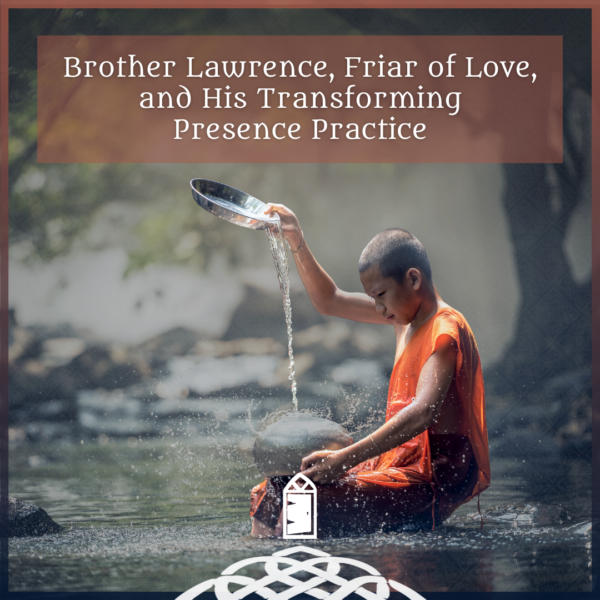Lectio divina is an ancient prayer practice, meaning sacred reading. It is a way of being with the sacred texts of our tradition in a contemplative way. Lectio invites us to enter into silence and stillness to listen deeply for the stirring of the holy in scripture and in us. Here is a simple overview of the process (modified and condensed from the introduction of our book):
The Process of Lectio Divina
Preparation
Before beginning your time of lectio choose a scripture passage with which to pray. There are many ways to do this. I suggest in beginning a regular practice that you consider one of the daily readings of the Church or begin with one of the gospels or the psalms and work your way slowly through. If you meet regularly with a spiritual director, ask her or him for a suggestion.
As a way of introducing this process, I invite you to pray with this passage from Hosea 2:16-17, 21-22:
So I will allure her; I will lead her into the desert and speak to her heart. From there I will give her the vineyards she had, and the valley of Achor as a door of hope. She shall respond there as in the days of her youth, when she came up from the land of Egypt. . . I will espouse you to me forever: I will espouse you in right and in justice, in love and in mercy; I will espouse you in fidelity, and you shall know the LORD.
Before you begin, make sure you have allowed yourself enough time to enter deeply into this experience. With regular practice you will come to know how long is “enough” for you, but to begin, plan at least a half hour of uninterrupted time. At the heart of lectio divina is cultivating the ability to listen deeply, to hear “with the ear of our hearts” as St. Benedict encourages us. When we read the scriptures we are invited to follow the example of the prophet Elijah who listened for the still, small voice of God (I Kings 19:12); the “faint murmuring sound” which is God’s word for us and God’s voice touching our hearts. This deep listening is a process of tuning ourselves to the presence of God. In order to hear this still, small voice, we must learn to love silence. Our modern culture surrounds us with noise from the television, radio, video games, constant conversation, and mental chatter. It takes some time to transition from the noise of our day to a place of deep stillness where we can then listen deeply. Use whatever method is best for you and allow yourself to enjoy silence for a few moments.
Sit comfortably, shifting your body so you feel relaxed and open. Take as much time as you need to turn inward and settle into stillness. It is often helpful to notice your breathing: with the in-breath, breathe in an awareness of the presence of the Spirit; with the out-breath, breathe out all that distracts you from this time of prayer. Practice letting go by placing any worries or burdens in God’s care. When you feel fully present and ready to listen to God’s voice, move into the next moment.
Reading God’s Word (Lectio)
Read the scripture passage at least twice out loud slowly: the first time for familiarity, the second time to enter more deeply into the text. Savor each phrase and gather the words into your depths. In this initial encounter with the text, listen for a word or phrase that captures your attention: the one that shimmers, beckons, invites, or addresses you, unnerves you, disturbs you, stirs you, a word or phrase that today in this moment of prayer seems especially ripe with meaning. Some days this word or phrase may jump right out at you, other days it may be a much more subtle and gentle invitation. Listen until you have a sense of in which word or phrase the invitation dwells, then repeat the word to yourself in the silence, savoring it.
Reflecting on God’s Word (Meditatio)
Read the scripture passage again and continue to savor the word or phrase, allowing it to unfold in your memory and imagination, and work within you speaking even more deeply. Notice what feelings or images arise for you. Allow the Spirit to expand your capacity for listening and to open you to a fuller experience of the word or phrase. Begin to notice where this passage touches your life. What do you see, hear, touch, or remember? What is evoked in you? Allow it to interact with your thoughts, your hopes, your memories, your desires. Rest in this awareness for some time. God’s word becomes our word, spoken to us in this moment.
Responding to God’s Word (Oratio)
After a time of resting in what the word or phrase evokes in you, you will be moved to deeper insight and a desire to respond and say “yes” to God. When this time comes, attend to the way the unfolding of this word or phrase connects with the context and situation of your life right now. How does it relate to what you have heard and seen this day? How does it connect with what is happening at home, at work, in your leisure time? Take an extended time of exploring this connection. How is God present to you there? Is God calling you to anything in your present circumstances? Is there a challenge presented here? Address your response to God in whatever way seems appropriate. Express this response in your heart, in your journal, through some artistic medium, through movement, as you feel invited and led. Allow yourself to be as spontaneous as possible. Allow your whole being to become prayer by the honest expression of your deepest thoughts, feelings, and desires in dialogue with God and allow yourself to be touched and changed by the word of God. Rest in this awareness and prayer for some time.Resting with God’s Word (Contemplatio)
Finally, simply rest in the presence of the One who has spoken to you intimately and personally. Rest in the silence of God’s loving embrace and allow your heart to be moved to gratitude for this time of prayer. Anyone who has ever been in love knows that there are moments when no words are necessary, moments beyond words where you simply rest in the presence of your beloved. Allow yourself to simply be in God’s presence. Practice silence and the letting go of your own words. Practice receptivity, taking in all that God offers you in this moment. Rest in this loving space as long as you need to.
~~~~~~~~~~~~~~~~~
I love what happens when I settle into stillness, open the scriptures, and allow God’s voice to call to me in this moment, to wash over me, to open my heart wider and say “yes”. The more I practice lectio, the more I realize it cultivates in me a contemplative awareness of the whole of life. Over time, I have found the rhythm of lectio divina has become woven into my very way of being with the world and I can use this contemplative practice to pray with art, music, poetry, nature, life experience, dreams, my body, to listen for how God is working there. If we hold a sacramental vision, then we believe that God pulses in the world, and that matter is not a barrier to the holy but a doorway drawing us deeper.
So with the classes I taught, whether on Benedictine spirituality or on creativity and the arts, I began using lectio to have students pray with different kinds of sacred “texts.” The current book I am writing is more about lectio divina itself, I am hoping the publisher will want to go ahead with one on using lectio to pray with the world next. In the meantime, I’ll invite you to explore this week some of the ways lectio can draw you more deeply into the world.
-Christine Valters Paintner






11 Responses
I have been leading a small expressive arts and spirituality group at my church and we have been doing breathwork, centering prayer and lectio divina as a lead in to drawing or painting I am constantly amazed at how clearly God speaks to each one of us in this process – It is so powerful the way God is working in us and through us isn’t it?
By chance – ( although I believe there are no accidents ) I have recently found you on the web. I just love reading your whole website and blog – everything I have found resonates deeply = please keep sharing your wonderful insights – I love it God Bless and Namaste.